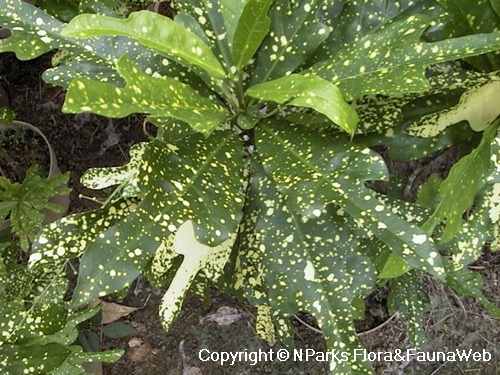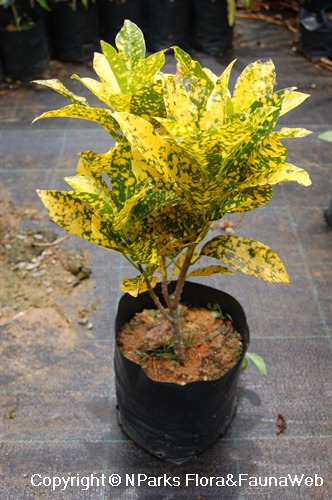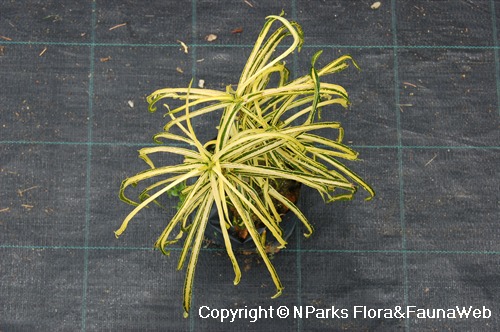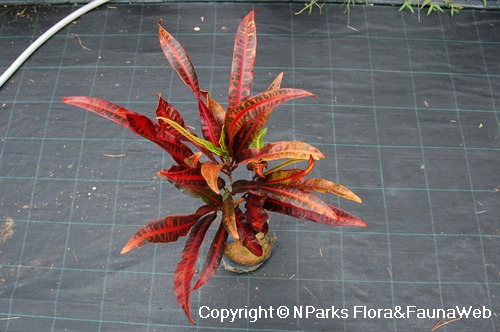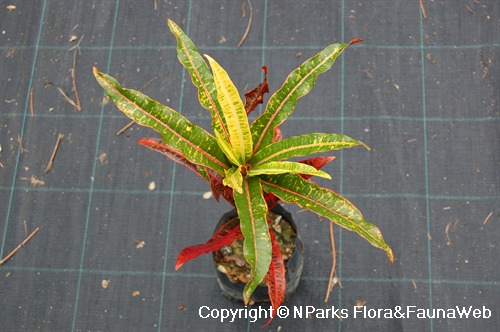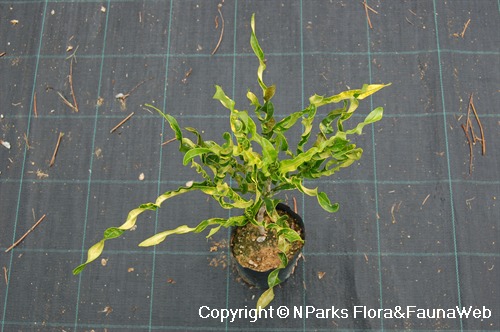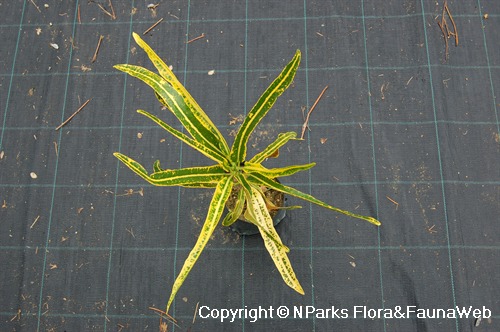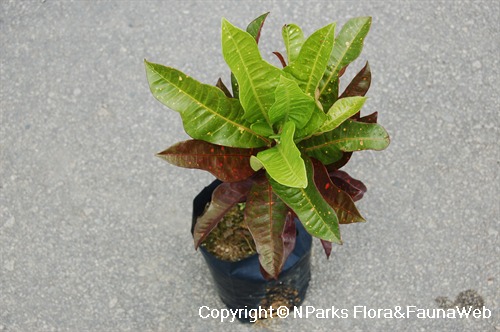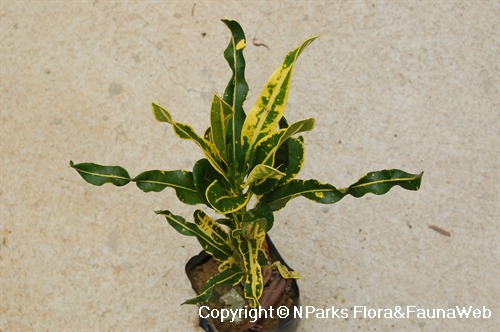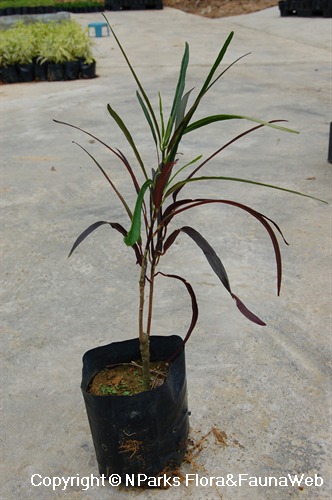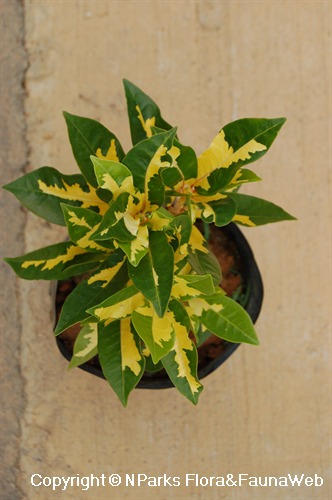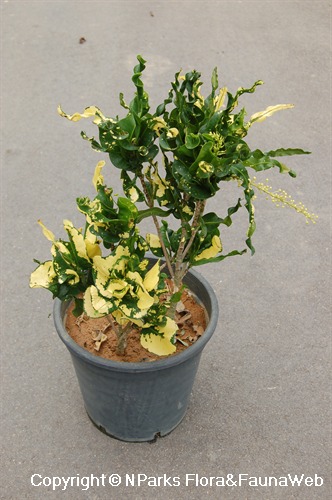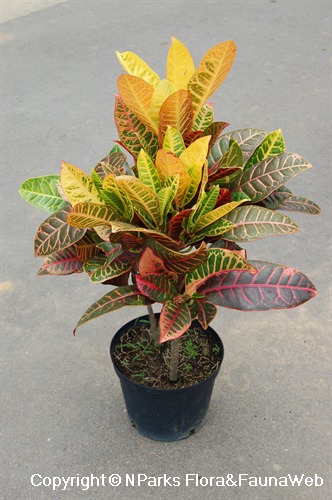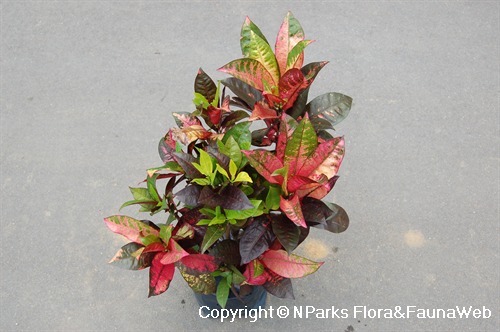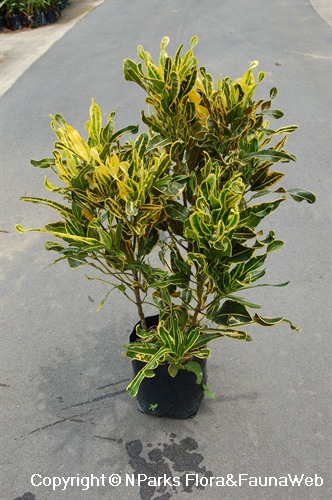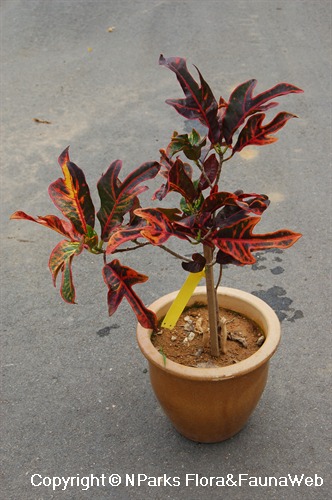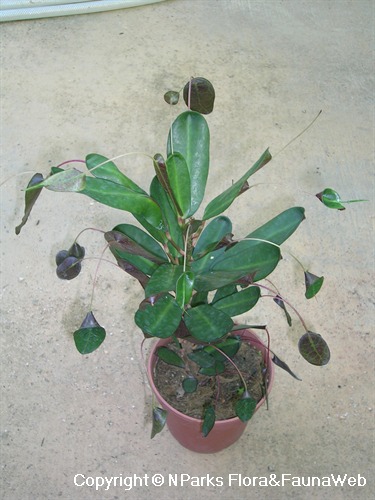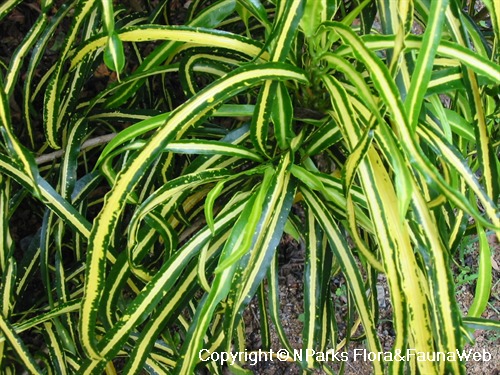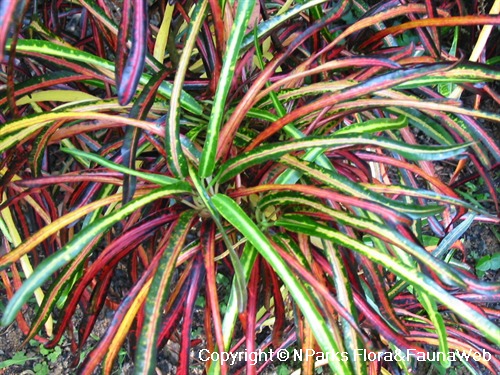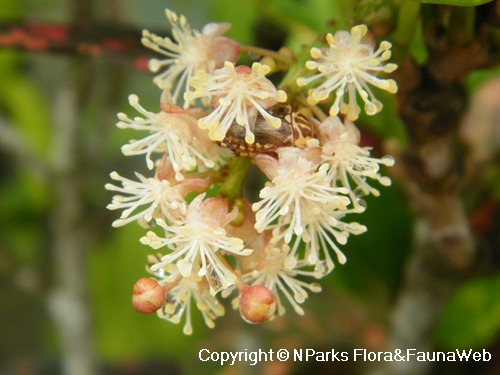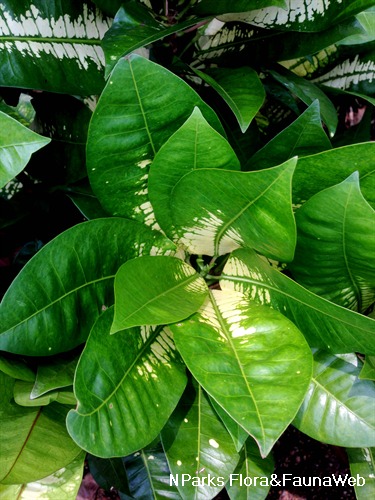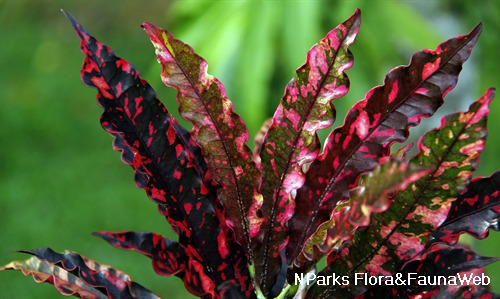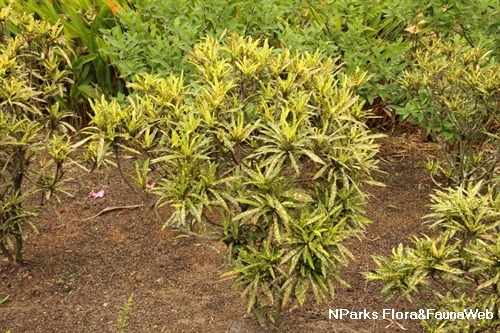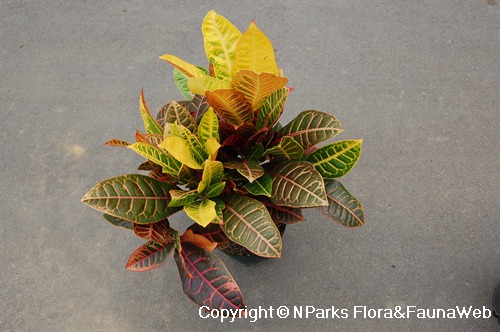
Back
Codiaeum variegatum
| Family Name: | Euphorbiaceae |
| Synonyms: | Croton pictus, Croton variegatus, Codiaeum variegatum var. pictum |
| Common Name: | Croton, Garden Croton, Puding, Joseph's Coat, Variegated Croton, Variegated Laurel, Codiaeum, 洒金榕, 变叶木 |
Name
Classifications and Characteristics
| Plant Division | Angiosperms (Flowering Seed Plants) (Dicotyledon) |
|---|---|
| Plant Growth Form | Shrub |
| Lifespan (in Singapore) | Perennial |
| Mode of Nutrition | Autotrophic |
| Maximum Height | 3 m |
| Maximum Plant Spread / Crown Width | 1.8 m |
Biogeography
| Native Distribution | Bismarck Archipelago, Borneo, Fiji, Java, Lesser Sunda Islands, Maluku, New Guinea, the Philippines, Queensland, Santa Cruz Island, Solomon Islands, Sulawesi, Vanuatu |
|---|---|
| Native Habitat | Terrestrial |
| Preferred Climate Zone | Tropical |
| Local Conservation Status | Non-native (Spontaneous (Casual)) |
Description and Ethnobotany
| Growth Form | An erect evergreen shrub with thick, large, leathery, glossy leaves that display an array of colours. |
|---|---|
| Foliage | Leaves simple, alternate, 5 to 30 cm long and 0.5 to 8 cm wide, leathery; leaf form is highly diversed in shapes and colours, depending on the cultivar; shapes ranging from linear, linear-lanceolate, oblong, elliptic, lanceolate, ovate, spatulate, fiddle-shaped to obovate, sometimes segregated to midvein into upper and lower parts; colours ranging from green, chartreuse, yellow, burgundy, purple-red, to pink, sometimes speckled with coloured spots or stripes of spots; petiole 0.2 to 2.5cm long. |
| Stems | Stems glabrous, multi-branched, with prominent leaf scars. |
| Flowers | Inflorescences star-shaped, inconspicuous, on 8 to 30 cm long arching racemes, with male and female flowers on separate inflorescences; Male flowers white, pedicels delicate, petals 5, stamens 20 to 30; Female flowers yellow, pedicels slightly thickened, petals absent, sepals ovate-triangular, styles recurved. |
| Fruit | Fruit capsules subglobose, slightly flattened, glabrous, brown, 9 mm in diameter, seeds 3; seeds 6 mm. |
| Cultivation | Plant prefers well-drained soils under full sun to partial shade. Propagate by stem cuttings. Chances of success can be achieved by using rooting hormones. Plant sometimes produces ‘sports’, or shoots, that are entirely different from the parent plant, which can be potted up independently. Plant is genetically unstable and may not resemble the parent when grown from seed. Use cuttings if prefer to produce a plant that is identical to the parent. |
| Etymology | The genus epithet ‘Codiaeum’ comes from the Greek word kodeia’ or ‘kodia’, means ‘head, head of plants, bulb, or capsule’, which may refer to the fruit capsules, or leaves (being used for wreaths). The genus epithet may also come from a native Tahitian name, ‘Kohido’. The species epithet ‘variegatum’ means variegated, referring to its variously variegated leaves. |
| Ethnobotanical Uses | Food (Herb or Spice): Young leaves in some cultivars are used in the East Indies as a vegetable, but cases of irritation have been reported. Medicinal: The leaves are specified as herbal medicine for extravasated blood and swelling. Cut - Dried Flower: The leaves are used as cut foliage. |
Landscaping Features
| Desirable Plant Features | Ornamental Foliage |
|---|---|
| Landscape Uses | Parks & Gardens, Small Gardens, Hedge / Screening, Container Planting |
| Usage Hazard - Cons | Irritant - Sap, Staining Sap, Toxic Upon Ingestion |
| Usage Hazard - Cons Remarks | Cut stems and leaves exude milky sap that can cause an allergic reaction in some people. Stem juices may stain clothing. Bark and roots are known to cause burning sensation if chewed. |
Plant Care and Propagation
| Light Preference | Full Sun |
|---|---|
| Water Preference | Moderate Water |
| Plant Growth Rate | Moderate |
| Rootzone Tolerance | Moist Soils, Well-Drained Soils |
| Propagation Method | Stem Cutting, Air-Layering |
| Plant Growth Rate Remarks | Slow. |
Foliar
| Foliage Retention | Evergreen |
|---|---|
| Mature Foliage Colour(s) | Green, Yellow / Golden, Red, Orange |
| Mature Foliage Texture(s) | Glossy / Shiny, Leathery |
| Foliar Type | Simple / Unifoliate |
| Foliar Arrangement Along Stem | Spiral |
| Foliar Shape(s) | Non-Palm Foliage (Ovate) |
| Foliar Venation | Pinnate / Net |
| Foliar Margin | Entire - Wavy / Undulate |
| Leaf Area Index (LAI) for Green Plot Ratio | 4.5 (Shrub & Groundcover - Dicot) |
Image Repository
Others
| Master ID | 537 |
|---|---|
| Species ID | 1833 |
| Flora Disclaimer | The information in this website has been compiled from reliable sources, such as reference works on medicinal plants. It is not a substitute for medical advice or treatment and NParks does not purport to provide any medical advice. Readers should always consult his/her physician before using or consuming a plant for medicinal purposes. |

